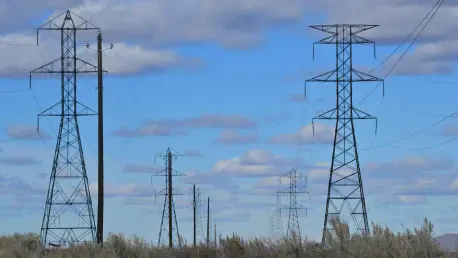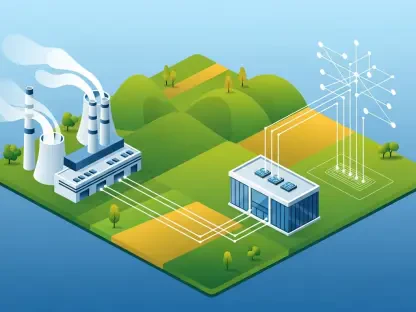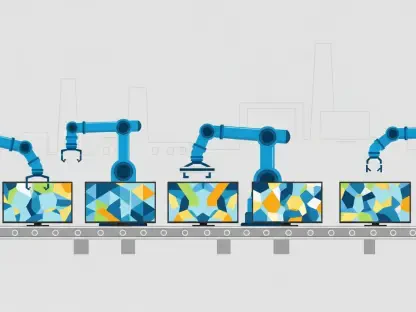What happens when entire communities are cut off from the digital world, unable to work remotely, attend online classes, or even stream a simple video without endless buffering? In rural Georgia, this struggle affects thousands of households, creating a stark divide between those with access and those without, but a groundbreaking partnership between Conexon Connect and a local electric cooperative is changing that landscape by delivering high-speed internet to areas long overlooked by traditional providers. This initiative isn’t just about laying cables—it’s about connecting lives to opportunities that many take for granted.
The significance of this project lies in its potential to transform rural Georgia, where the digital gap has hindered economic growth and social inclusion for far too long. With Conexon’s latest fiber network, supported by substantial federal funding, over 158,000 homes and businesses now have a lifeline to the modern world. This effort addresses a critical need, bridging disparities and setting a model for how public-private collaborations can tackle systemic challenges in connectivity across the nation.
Why Georgia’s Internet Gap Remains a Critical Issue
In many parts of rural Georgia, the internet is either painfully slow or entirely unavailable, leaving residents stranded in a digital desert. This isn’t just an inconvenience—it’s a barrier to education, as students struggle to complete assignments without reliable access. Businesses, too, are stunted, unable to compete in an online marketplace or connect with customers beyond their immediate surroundings. The disparity is glaring when compared to urban centers where high-speed connections are the norm.
This persistent gap has deep roots in infrastructure challenges, with traditional providers often deeming rural areas unprofitable for investment. The result is a cycle of neglect that perpetuates inequality, as families miss out on telemedicine, remote work, and other essential services. Conexon’s intervention, through partnerships with entities like electric cooperatives, targets these forgotten regions with a focus on sustainable, long-term solutions.
The stakes are high, as the lack of broadband access directly correlates with lower economic outcomes and reduced quality of life. Data from federal reports indicate that rural areas with limited connectivity see up to 20% lower household incomes compared to connected regions. Closing this divide is not just a technical challenge but a moral imperative to ensure equity across the state.
The Vital Role of Broadband in Georgia’s Future
Beyond individual struggles, the broader impact of internet access touches every facet of community development in Georgia. Reliable connectivity fuels economic progress by enabling small businesses to expand their reach through e-commerce and digital marketing. It also supports farmers who rely on precision agriculture tools to optimize yields, a critical need in a state with a strong agricultural backbone.
Education is another area where broadband acts as a great equalizer. Virtual learning, access to online resources, and digital skills training become possible, preparing the next generation for a tech-driven workforce. In contrast, the absence of such access widens achievement gaps, as seen in rural districts where test scores often lag behind urban counterparts by significant margins.
Nationally, initiatives like the American Rescue Plan have recognized this urgency, allocating billions to states for broadband expansion. In Georgia, such funding has empowered projects like Conexon’s, which leverage existing infrastructure from partners like Grady EMC to deliver results efficiently. This alignment with federal goals underscores how local efforts contribute to a larger mission of universal access.
Details of Conexon’s Newest Fiber Network Deployment
Conexon Connect’s seventh fiber network in Georgia, completed in collaboration with Grady EMC, marks a significant milestone in rural connectivity. This ambitious project connects 158,000 homes and businesses, a feat made possible by a $9.3 million grant from the American Rescue Plan. Unlike urban-focused rollouts, this network prioritizes remote areas, ensuring that even the most isolated communities gain access to gigabit-speed internet.
The technical aspects of the build are noteworthy, with fiber-optic technology at its core, offering unparalleled reliability and bandwidth compared to older systems like DSL or satellite. This deployment stands out among Conexon’s other Georgia initiatives due to its scale and the strategic use of electric co-op infrastructure, which reduces costs and speeds up installation. When compared to similar efforts, such as Brightspeed’s activation of 37,000 locations in Ohio, the Georgia project highlights a tailored approach to rural challenges.
The rollout also sets a benchmark for future expansions, demonstrating how targeted funding and partnerships can achieve measurable impact. With construction phases designed for efficiency, the network serves as a blueprint for other states grappling with similar connectivity issues. The focus on fiber ensures long-term value, as it can handle increasing data demands for decades to come.
Perspectives on Transformation and Innovation
Feedback from those involved in the project paints a vivid picture of its potential to reshape rural Georgia. Leaders at Conexon have emphasized the importance of collaboration with electric co-ops, noting that these entities bring deep community trust and logistical advantages to the table. Their insights reveal a shared vision of internet access as a fundamental right, not a privilege reserved for urban dwellers.
Local stakeholders, including residents and small business owners, have shared stories of how this connectivity changes daily life. One farmer described using high-speed internet to monitor crop conditions in real-time, a capability that boosts productivity and cuts costs. Such anecdotes, paired with industry analysis from experts, highlight the ripple effects of broadband on economic vitality and personal empowerment.
Industry observers have also weighed in, pointing out that electric cooperatives are emerging as unlikely but powerful players in the broadband space. Their existing pole networks and community ties make them ideal partners for ISPs like Conexon. This innovative model of collaboration is gaining traction nationwide, offering hope for other underserved regions looking to replicate Georgia’s success.
Maximizing the Network for Community Development
With the infrastructure in place, the next challenge lies in ensuring that Georgia’s rural communities fully utilize this newfound connectivity. Digital literacy programs are essential, equipping residents with the skills to navigate online platforms, from job applications to virtual healthcare. Local organizations and schools can lead these efforts, tailoring training to meet specific community needs.
Businesses stand to gain immensely by embracing the digital marketplace, and local governments can play a role by offering incentives or workshops to encourage e-commerce adoption. Policymakers, meanwhile, should advocate for continued funding to extend coverage to remaining unserved areas, ensuring no one is left behind. These actionable steps can turn raw access into real progress, fostering economic resilience.
Tailored to Georgia’s rural context, strategies must also address unique barriers, such as limited tech resources in small towns. Partnerships with libraries or community centers to provide public access points can bridge initial gaps. By focusing on both adoption and expansion, communities can transform this network into a catalyst for sustainable growth and opportunity.
Reflecting on a Connected Legacy
Looking back, the completion of Conexon’s fiber network with Grady EMC stood as a turning point for rural Georgia, proving that even the most isolated areas could join the digital age. The collaboration showcased the power of innovative partnerships and federal support in overcoming longstanding barriers to connectivity. It became a testament to what focused effort and shared purpose could achieve.
The journey didn’t end with cables laid and homes connected; it sparked a broader conversation about sustaining momentum. Communities were encouraged to build on this foundation by investing in education and local enterprise, ensuring that access translated into empowerment. Advocacy for ongoing funding remained crucial to reach every corner of the state.
Ultimately, the success in Georgia offered a roadmap for other regions, highlighting the need for tailored solutions and persistent commitment. As the digital divide narrowed, the focus shifted to nurturing the skills and systems that would keep these communities thriving in an increasingly connected world.









